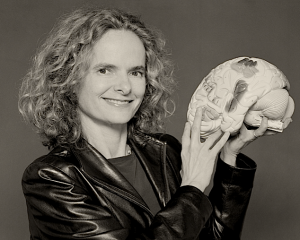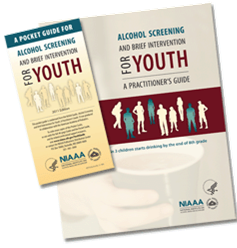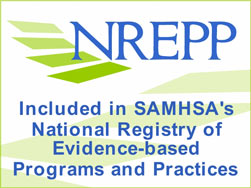May 2, 2014 at 9:29 am
The BMC Emergency Department’ recently published its Spring 2014 Public and Global Health newsletter. It features lots of great work being done at BMC including efforts from Project ASSERT, the Violence Intervention Advocacy Program and the BNI ART Institute! To download, click on the link below:
Final 2014 Spring P&GH Newsletter
By bniart
|
Posted in BNI-ART Institute, Boston Medical Center, Public Health
|
October 15, 2012 at 2:48 pm
by Llaen Coston-Clark
The American Medical News article: Recognizing the Alcoholic Patient, by Carolyne Krupa, really describes the need for SBIRT in medical settings. There's certainly a push for health professionals to know how to recognize and help patients with risky or unhealthy alcohol use. As one doctor describes this gap in care:
"There are knowledge barriers in how to identify [patients with risky alcohol use], as well as what to do with them with you have them. [...] Given that alcohol use disorders are so common in medical populations, it's ridiculous to think that it's ignored as much as it is."
Patrick G. O'Connor, MD, MPH
Professor of Medicine & Chief of General Internal Medicine at Yale School of Medicine
It's great to read about the ways some hospitals and medical schools are tackling this problem by training residents and medical students, and inviting AA members to share their stories (great idea!). Boston University School of Medicine does something similar via their Clinical Addiction and Research Education (CARE) Unit, and the BNI-ART Institute conducts brief trainings for small groups of medical students.
By bniart
|
Posted in Uncategorized
|
May 22, 2012 at 11:55 am
by Caitlin Barthelmes
Evaluating skills and giving feedback can be a tricky thing. My work at the BNI-ART Institute has taught me three effective ways to provide helpful feedback to new learners.
Engage the Trainee in Self-Assessment
Adult learners are insightful and usually have a sense when something is “working” for them or not. I find the best way to start a feedback session is asking the trainee how it went before providing my input. The session becomes a conversation instead of a lecture.
Keep it Positive
While human nature causes us to want to zero in on what went wrong, start the conversation with what went well. Asking the trainee what they liked about their performance can be a good starting point. Then you, as the expert, can give some positive feedback about the trainee’s strengths. If you have the luxury of a third party observer, ask them for positive input too! Starting out on a note of encouragement helps prevent frustration with learning new skills and bolsters self-esteem and interest in trying again.
Give Alternatives
Feedback should be balanced. We do need to point out areas of improvement for trainees to progress, but a good rule of thumb is that with every constructive criticism, provide the preferred alternative. For instance, if a trainee had a judgmental tone when speaking with a patient, you could suggest alternative phrases or wording that comes across more compassionate or neutral.
Remember, the point of giving feedback is not only to improve skills but also to inspire a trainee to keep practicing!
Edited by Llaen Coston-Clark
By bniart
|
Posted in SBIRT Training
|
May 2, 2012 at 9:33 am
by Llaen Coston-Clark
"It's like driving a car without brakes," explains Dr. Nora Volkow, director of NIDA. Morley Safer of CBS's 60 Minutes recently interviewed Volkow about her research on addiction in Hooked: Why bad habits are hard to break (April 29, 2012). They touched upon addiction as a chronic illness, changes in the brain, stigma, why people “just can’t stop”, over-prescription of pain medications, and more.
I thought addiction was explained well in this segment, so if you have a few free minutes, check it out!
Also, don't miss the brief "Web extras" on food addiction, a possible cure for addiction, and important factors such as ethnicity and environment . The most dangerous drugs may surprise you.

Dr. Nora Volkow
By bniart
|
Posted in Addiction
|
April 13, 2012 at 11:08 am
by Llaen Coston-Clark
 I recently stumbled upon NIAAA's practitioner's guide on Alcohol Screening and Brief Intervention for Youth. There are two forms:
I recently stumbled upon NIAAA's practitioner's guide on Alcohol Screening and Brief Intervention for Youth. There are two forms:
1) an easy to use, pocket-sized guide that breaks down the steps of screening and brief intervention (SBI), and offers information on standard drinks, resources, and when to screen patients, and
2) a 40 page guide that explains SBI in more detail, provides tips for following up with patients, addresses confidentiality issues (with parents, with patients), answers FAQs, and highlights important reasons for asking youth about drinking.
I like NIAAA's emphasis on prevention and their use of brief motivational interviewing. The language of the guide is less authoritative and, instead, follows some best practices of motivational interviewing, including:
- asking permission to provide factual information or feedback
- affirming any healthy choices/behaviors
- exploring with the patient what steps he or she would like to take to cut back or abstain from drinking.
This is a great strategy for discussing alcohol use with adolescents who are becoming more independent and who might otherwise "shut down" with an adult lecturing at them.
What makes NIAAA's pocket guide different from other SBI tools, including our own BNI (Brief Negotiated Interview)?
- There are just 2 screening questions to get the conversation started.
- NIAAA touts it as the first tool to ask about the patient's friends' drinking habits.
- It offers a risk scale to determine how risky the patient's drinking is (considering patient age and frequency of drinking).
- It advises practitioners to screen youth as young as 9 years old.
What do you think of NIAAA's new guide? Helpful, bite-sized guidance, or too much information crammed into a pocket-sized pamphlet? Could you imagine using this with 9-18 year-olds?
By bniart
|
Posted in Adolescents, Brief Intervention, Screening
|
April 9, 2012 at 10:36 am
by Deric
Joseph Nowinski, a clinical psychologist, and Robert Doyle, a clinical psychiatry instructor at Harvard Medical School, recently wrote a book called Almost An Alcoholic: Is My (or My Loved One’s) Drinking a Problem? that outlines problem drinking as a continuum that includes a gray area (“almost an alcoholic”) beyond the dichotomy of “alcoholic” and “not an alcoholic” (DSM IV criteria of alcohol dependence and alcohol abuse versus no problem). Classifying things, especially if we hold on to them too tightly, can sometimes get us into trouble. By being so exact, we can miss things that we shouldn’t. And I question whether this is the case with how alcohol and drug use are defined clinically.
Promoting the book, the two authors recently wrote this article on TheAtlantic.com quickly summarizing the books points and their proposal for how redefining drinking can also change the way we conceive it, discuss it and treat it.
We believe that, as opposed to thinking only those men and women whose drinking has progressed to the point where they need help, that many people in the mid-range may also be suffering as a result of drinking. That suffering may take the form of declining job performance and declining health so that the individual does not yet recognize it as being related to drinking.
Their stance is aligned with proposed revisions to the DSM that would shift away from the two clinical definitions and toward a spectrum. It also fits in with Screening and Brief Intervention (SBI) and how important it is to identify unhealthy drinking in patients and intervene before it becomes a larger problem. Screening uncovers patients who may be drinking in amounts that are hazardous to their physical, mental and/or social health. These are often people who would not traditionally be defined as dependent or abusers, and having a tool to identify this “hidden population” of drinkers can prevent future illness, injury, personal consequences or addiction. Brief intervention is then a way to discuss a patient’s alcohol use and motivate that patient to make the healthy changes that reduce the ways drinking can be a problem in one’s life.
Edited by Llaen Coston-Clark
By bniart
|
Posted in Brief Intervention
|
March 16, 2012 at 10:41 am
by Caitlin K. Barthelmes
Delivering a workshop or a training to a new audience can be both exciting and challenging. After adapting over 80 SBIRT workshops, I have discovered some key lessons to help smooth out the process and pave the way for a successful translation.
1. Know Your Audience
This may seem like a given, but we are often ask to give a lecture or a workshop to a group of people we have never met before. Taking time to do some research ahead of time can really pay off for you and the trainees. Look into the organization - find out what populations they serve, their mission, their number of employees, where they are located…you can do this by a simple search online or a friendly conversation with your contact person.
2. Consider the Culture
Trainings take place amidst a pre-established culture. The culture of the audience not only includes ethnic and regional characteristics (predominately Spanish speakers or members of a tribal community for instance), but also attitudes and expectations based on the way the organization or program operates. How do they communicate with their patients? How strong is the stigma associated with the topic? Sometimes a culture’s attitudes and beliefs align with the message of your training, sometimes not. For example, a student health center on a college campus may be practicing harm-reduction approaches already whereas a treatment center may want to embrace more abstinent-only techniques. You do not need to drastically change your message or training to fit respective audiences cultures, but rather when framing material be considerate about how the content may interact with their culture.
3. Prepare for the Number
The amount and type of interaction during a workshop may depend on the size of the audience. Smaller groups can engage in discussions more easily than larger groups. Large groups lend themselves to peer-to-peer feedback through small-group exercises. Knowing the number of people expected ahead of time will allow you to develop a workshop with appropriate learning opportunities that help trainees stay engaged.
4. Be Flexible
Flexibility is a must. Sometimes no matter how much time or effort you put into developing a perfect training for a specific group, the day of the workshop things can change. Less people show up than expected or the audience mix is off (such as having more social workers instead of doctors). If you know your material, you can always adapt on the spot and not get shaken when things don’t go according to plan.
Edited by Llaen Coston-Clark
By bniart
|
Posted in SBIRT Training
|
March 6, 2012 at 4:10 pm
by Llaen Coston-Clark
According to the founders of motivational interviewing, a communication style “refers to an attitude and approach to helping patients, a way of talking with them that characterizes your relationship with them.” They identify three communication styles which can  be imagined as points on a continuum: Following at one end, Directing at the other end, and Guiding in the middle. During a BNI (brief negotiated interview) with a patient, different communication styles might be used during different parts of the intervention.
be imagined as points on a continuum: Following at one end, Directing at the other end, and Guiding in the middle. During a BNI (brief negotiated interview) with a patient, different communication styles might be used during different parts of the intervention.
Following is used when we allow the patient to lead the conversation; we follow the story and work at understanding it.
- This would be Step 1 of the BNI: Build Rapport, where we ask the patient to describe a day in their life and how the health behavior we are discussing fits in to it. By sitting back and listening, we get a lot of useful information about the patient (such as family, housing, employment, access/resource barriers, other/related health concerns) in a short amount of time.
Directing is used when we lead the conversation by telling or prescribing something (information, instructions) to the patient.
- This would be Step 3 of the BNI: Information/Feedback, where we get permission from the patient to share facts, knowledge, guidelines about the health issue. Here we might be sharing information that is critical to the patient’s well-being (such as long and short term health effects, medication warnings, recommendations for preventing disease).
Guiding is used when we are exploring the health behavior alongside the patient and we are there to support, encourage, and assist. We are not just passively listening, nor are we taking control of the conversation. As a good guide, we know “what is possible and can offer alternatives” from which the patient can choose.
- In Step 2 of the BNI, Pros and Cons, we explore with the patient what they like and like less about a behavior (ex: drinking alcohol).
- In Step 4, Readiness Ruler, we ask the patient about their readiness to make any changes to the behavior (ex: reduce drinking).
- In Step 5, Action Plan, we elicit steps they would like to take to be safer or healthier.
We are providing some guidance during these steps; we are not Following so much that we lose the focus and goal of the intervention, nor are we Directing so much that we impose our ideas and suggestions onto the patient.
Ultimately, the guiding style communicates, “I can help you to solve this for yourself,” and this is the predominant style of the brief negotiated interview.
Source: Rollnick, S., Miller, W. R., & Butler, C. C. (2008). Motivational interviewing in health care: Helping patients change behavior. New York, NY: The Guildford Press.
By bniart
|
Posted in Brief Intervention
|
March 6, 2012 at 4:03 pm
Project ASSERT has earned a designation into SAMHSA’s National Registry of Evidence-based Programs and Practices (NREPP), receiving high scores across its review criteria.
According to its website, NREPP is “a searchable online registry of mental health and substance abuse interventions that have been reviewed and rated by independent reviewers. The purpose of this registry is to assist the public in identifying approaches to preventing and treating mental and/or substance use disorders that have been scientifically tested and that can be readily disseminated to the field.” After a thorough application process that included submission of background, supporting research and program curriculum, NREPP reviews and scores a program in areas of research and readiness for dissemination. Project ASSERT received a 3.2-3.8 / 4 on the research quality of four supporting studies and 4 / 4 on readiness for dissemination.
According to Dr. Ed Bernstein:
The NREPP designation is a culmination of our 15 years of published research and of the BNI-ART effort for program dissemination. The SAMHSA NREPP review process represents an attempt to provide the field with a high level of validated information. The scores we received in the review are extraordinary and are easily in the top 10% of over 200 programs reviewed. Research, practice, and programs clearly have interacted and informed one another.
None of this would have been possible without the dedicated health promotion advocates (HPAs) who work tirelessly to understand patients and their health concerns, and connect them with appropriate services.
Edited by Llaen Coston-Clark
By bniart
|
Posted in BNI-ART Institute
|
March 6, 2012 at 3:58 pm
by Gina Foianini
Public health graduate student
Health Promotion Advocate (HPA) Intern, 2010-2011
As a health promotion advocate (HPA), one of my  main goals is to connect patients with primary care providers. Many of the patients in the pediatric emergency department (ED) do not have a regular provider and, as a result, end up using ED services for non-urgent needs.
main goals is to connect patients with primary care providers. Many of the patients in the pediatric emergency department (ED) do not have a regular provider and, as a result, end up using ED services for non-urgent needs.
Although I make appointments for patients both at Boston Medical Center (BMC) and community health centers, adolescent patients don’t always keep their appointments. In fact, approximately two thirds of adolescents don’t make it to the primary care appointments made for them by HPAs at the hospital. Below are five potential barriers that stand in the way of adolescents receiving primary care:
- Lack of Transportation
Many adolescents in Boston don’t have access to a car or money to take public transportation to an appointment. This is especially a problem for adolescents whose parents are less involved in their lives.
- Forgetfulness
Forgetting to write down the details of the appointment or forgetting the appointment all together.
- Ambivalence
Feeling ambivalent is common with adolescents. When they are no longer sick and requiring immediate care, adolescents may feel ambivalent about seeing a primary care doctor when it no longer feels "necessary" to do so, even though they think it could be helpful.
- Insurance Issues
Lack of insurance is a major barrier to accessing care for adolescents. (Most patients without insurance at BMC are enrolled in MassHealth but there are still obstacles that make this process difficult.)
- Communication Barriers
Many adolescents are difficult to reach by phone. Using someone else’s phone, having a full voice mailbox, or screening incoming calls from unfamiliar hospital phone numbers all make contacting patients even more difficult.
While considering these barriers, my goal is to find solutions for each patient that will create a more direct link between the emergency department and the doctor’s office.
Edited by Llaen Coston-Clark
By bniart
|
Posted in Adolescents
|

 I recently stumbled upon
I recently stumbled upon  be imagined as points on a continuum: Following at one end, Directing at the other end, and Guiding in the middle. During a
be imagined as points on a continuum: Following at one end, Directing at the other end, and Guiding in the middle. During a 
 main goals is to connect patients with primary care providers. Many of the patients in the pediatric emergency department (ED) do not have a regular provider and, as a result, end up using ED services for non-urgent needs.
main goals is to connect patients with primary care providers. Many of the patients in the pediatric emergency department (ED) do not have a regular provider and, as a result, end up using ED services for non-urgent needs.